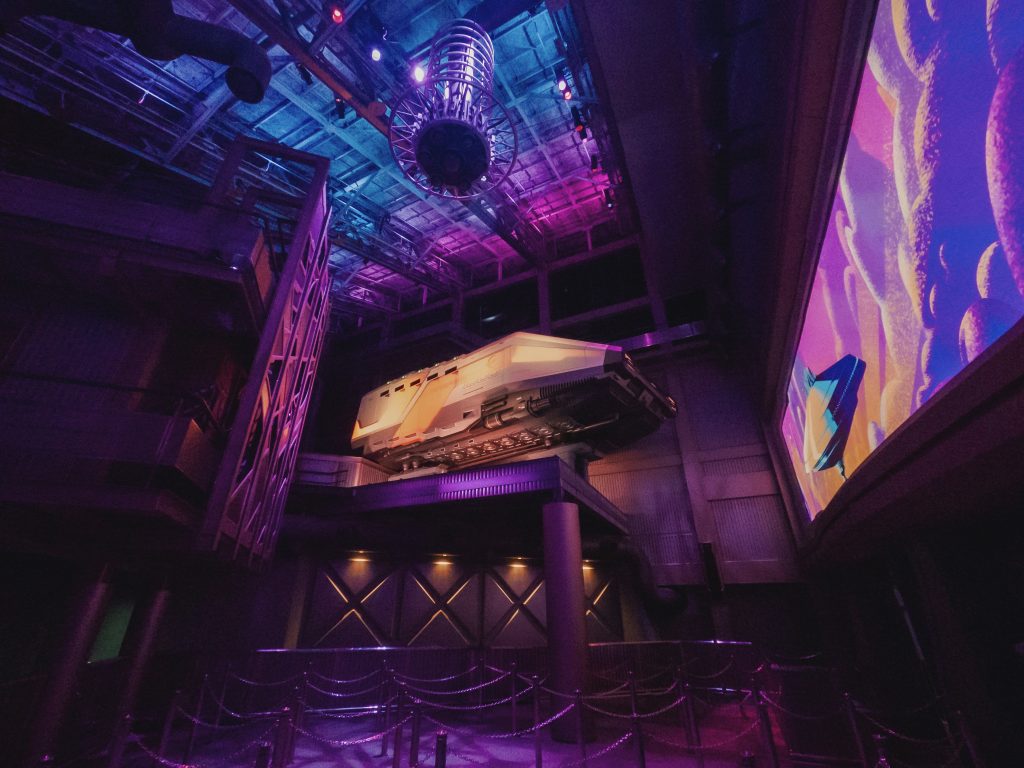星艦第七次試飛:一次技術進步與挑戰的交織
# 星艦第七次試飛:一次技術進步與挑戰的交織
美國太空探索技術公司SpaceX於近日進行了其重型運載火箭星艦(Starship)的第七次試飛,然而這次試飛的結果卻讓人感到既振奮又失望。
## 發射過程中的挑戰
當地時間星期四,星艦在德州博卡奇卡的發射台順利升空。這次的任務不僅是對火箭技術的一次實驗,同時也是星艦首次在太空進行衛星部署模擬演練。這樣的嘗試本應是SpaceX在太空探索領域技術進步的見證,然而在接近軌道速度的關鍵時刻,火箭的第二級飛船卻與地面失去了聯繫。
根據報導,火箭的上級引擎在升空後不久接連失效,導致星艦在短時間內便無法繼續其飛行任務。更糟糕的是,這次失聯事件也迫使途經墨西哥灣的航班改道,以避免潛在的危險。
## 技術進步的希望
儘管此次試飛未能如預期般成功,但SpaceX的工程團隊在火箭的設計和發射過程中所展現出的技術進步仍然值得關注。這次的測試使用了新型的Mechazilla發射塔,顯示了SpaceX在火箭發射技術上的持續創新。
SpaceX創辦人馬斯克一向以追求卓越和打破常規而聞名,這次的試飛雖然遭遇挫折,但卻不會令他們對未來的太空任務失去信心。馬斯克曾表示,失敗是成功之母,重要的是從每次失敗中學習,並不斷改進。
## 結語:未來仍然充滿可能性
星艦的第七次試飛雖然以失敗告終,但這並不意味著SpaceX的太空探索計畫將會停滯不前。相反,這次的挑戰可能會成為未來成功的基石。對於熱愛太空的我們來說,這無疑是一個值得關注的時刻,未來的太空探索之路仍然充滿著無限可能。隨著技術的進步和不斷的嘗試,人類的太空夢想仍在繼續。
不妨持續關注SpaceX的最新動態,期待他們在未來能帶來更多驚喜與突破。
Tags: SpaceX, 太空探索, 星艦, 火箭技術, 馬斯克
星艦再度試飛失利,太空探索之路挑戰重重
# 星艦再度試飛失利,太空探索之路挑戰重重
## 火箭發射瞬間的希望與失落
美國太空探索技術公司SpaceX的重型運載火箭星艦(Starship)於當地時間星期四在德州成功發射,這是星艦的第七次試飛。這次任務的重點在於進行衛星部署的模擬演練,對於SpaceX未來的太空任務具有重要意義。然而,這一切的希望卻在升空後不久化為泡影,火箭的第二級飛船與地面失去聯繫,最終導致失敗。
## 經歷失聯的瞬間
在發射的初期,星艦展現出強大的性能,成功突破大氣層,然而在接近預定的軌道速度時,火箭的引擎接連失效,最終導致星艦與地面失去聯繫。這一情況引起了國際間的廣泛關注,甚至影響了飛經墨西哥灣的航班,迫使它們改道,避免遭遇可能掉落的火箭碎片。這次事件不僅是SpaceX的一次重挫,也讓人們對於太空探索的挑戰有了更深刻的認識。
## 技術進步與挑戰並存
儘管此次試飛遭遇重大挑戰,但SpaceX的技術進步仍然顯而易見。公司在此次測試中成功使用了Mechazilla發射塔,這標誌著其在火箭發射技術上的進步。SpaceX創始人馬斯克在過去的幾年中不斷推動技術革新,渴望將人類送上火星,然而每一次的試飛都是一場艱苦的戰鬥。
這次失敗不僅是技術上的挫折,也讓人們思考太空探索的未來。太空並不是一個容易的領域,無數的變數與挑戰等待著人類去克服。星艦的失敗提醒著我們,探索未知需要勇氣與毅力,也需要在失敗中學習與成長。
## 未來的探索之路
儘管面臨著重重挑戰,SpaceX並未放棄。他們的使命是將人類送往更遠的地方,探索宇宙的奧秘。這次的失敗或許會成為未來成功的基石,因為每一個失敗都是邁向成功的一步。隨著技術的進步與經驗的累積,未來的試飛將會更加成熟與穩定,太空探索的夢想也將更進一步。
面對不斷變化的太空探索環境,SpaceX的下一步行動將會受到全球的關注。人們期待著,這個充滿挑戰的旅程能夠為人類帶來更多的可能性,讓我們在浩瀚的宇宙中找到屬於自己的位置。
Tags: SpaceX, 太空探索, 技術挑戰, 星艦
星艦第七次試飛:挑戰與突破並存的太空探索之路
# 星艦第七次試飛:挑戰與突破並存的太空探索之路
SpaceX的星艦第七次試飛在得州的成功發射,雖然引起廣泛關注,但隨後的失聯事件卻讓這次任務蒙上陰影。這次的試飛不僅是一次技術的展示,更是對太空探索未來的深刻思考。
## 夢想的高飛與現實的挑戰
這次的試飛於當地時間星期四進行,星艦在發射後不久便失去與地面的聯繫。雖然一開始的升空過程一切順利,但在接近軌道速度時,火箭的第二級卻因不明原因發生了引擎故障,導致整個飛行任務提前結束。
這一事件不僅讓SpaceX面臨技術挑戰,還影響了周圍航班的安全。為了避免可能掉落的火箭碎片影響飛行安全,相關航班被迫改道,這一連串的情況無疑讓人們對太空探索的風險有了更真實的認識。
## 一步一步走向太空的未來
儘管這次試飛以失敗告終,但SpaceX對於星艦的設計和技術仍然保持著樂觀的態度。這次測試包括了星艦在太空中進行衛星部署的模擬演練,這對未來的太空任務至關重要。馬斯克的團隊始終堅信,每一次的失敗都是通向成功的必經之路,這個信念在太空探索的歷史中屢見不鮮。
從早期的阿波羅任務到如今的商業太空旅行,太空探索的步伐雖然艱辛,但每一次的突破都在推動人類對未知宇宙的探索熱情。這樣的精神,無疑是所有追求夢想者的共同信仰。
## 社會影響與未來展望
SpaceX的星艦計劃不僅僅是技術上的挑戰,它還涉及到人類未來的發展方向。隨著太空探索的深入,對於資源的需求、環境的影響以及宇宙的法律問題等,都將成為社會關注的焦點。這次的試飛事件,無疑將促使更深入的討論與研究。
在這個瞬息萬變的時代,SpaceX的每一次試飛都是一場關於夢想、勇氣與堅持的冒險,無論結果如何,這些努力都在推動人類走向更遙遠的未來。在未來的日子裡,我們期待看到SpaceX能夠在太空探索的道路上走得更遠,更穩。
即便星艦第七次試飛的結局並不如願,但它展現出來的探索精神與對未知的渴望,依然是我們所有人應該學習的榜樣。未來的太空之旅,或許就在這些挑戰與努力之中逐漸成形。
Tags: SpaceX, 太空探索, 技術挑戰, 星艦
馬斯克宣布SpaceX總部正式遷至德克薩斯州Starbase
## 馬斯克的決策背後的戰略考量
在12月12日的公開聲明中,SpaceX行政總裁馬斯克(Elon Musk)宣布,公司的總部將正式遷至德克薩斯州的Starbase。這一決定不僅是公司發展的一個新里程碑,也反映了馬斯克對未來航天探索的宏大藍圖。
## 為何選擇德克薩斯州?
馬斯克指出,德克薩斯州的獨特地理位置以及當地政府對航天產業的支持,讓SpaceX能夠更有效地進行火箭發射和相關業務。這裡的開放空間和低人口密度,為各類實驗和發射活動提供了理想環境。更重要的是,德克薩斯州的稅收政策對企業發展相當友好,這無疑對SpaceX的長期增長具有重要意義。
## 對當地經濟的影響
此次總部遷移將為德克薩斯州帶來大量的就業機會,並促進當地經濟的增長。馬斯克表示,隨著SpaceX的擴張,將會需要更多的人才,並且會吸引更多的技術型企業進駐,形成一個航天產業的聚集效應。
## SpaceX的未來計劃
在未來的計劃中,SpaceX將繼續致力於火星探索和衛星網絡的佈局。馬斯克提到,Starbase將成為公司的重要基地,支持各類型的火箭發射,包括載人航天任務及商業衛星發射。這一系列舉措不僅展示了SpaceX的技術實力,也為全球航天事業的發展作出貢獻。
## 總結
隨著SpaceX的總部落戶德克薩斯州,馬斯克再次展示了他的前瞻性思維和對航天事業的堅持。這不僅是企業的戰略調整,更是美國航天史上重要的一步。未來,隨著SpaceX的發展,我們將見證更多令人興奮的航天探索。
讓我們拭目以待,期待馬斯克和他的團隊在未來的冒險中帶來更多驚喜!
Tags: Elon Musk, SpaceX, 德克薩斯州, 航天, 高科技
SpaceX星艦第六次試飛成功,馬斯克與特朗普同場觀摩
在全球矚目的目光下,SpaceX於近日成功進行了其重型運載火箭「星艦」(Starship)的第六次試飛。這次的試飛不僅是技術上的一次突破,還吸引了美國當選總統特朗普的親自到場觀摩,為事件增添了不少話題性。
此次試飛於11月19日進行,雖然整體流程相當流暢,但火箭的第一級助推器並未如預期般成功返回發射塔進行回收,而是墜落在墨西哥附近的海域。這一結果讓不少科技迷和航天愛好者感到遺憾,但馬斯克和其團隊的創新精神卻讓人讚賞不已。
更具趣味性的是,SpaceX在此次試飛中使用了一隻人造香蕉作為無重力指標,這一創意引來了不少網友的熱議,馬斯克甚至在其官網上推出了相關的人造香蕉產品,讓人感受到科技與幽默的結合。
此外,NASA近期也宣布將延伸與SpaceX及Blue Origin的合約,計劃在現有框架下開發月球的重型貨運服務,這無疑為SpaceX的未來發展注入了一針強心劑。
隨著太空探索的熱潮持續升溫,SpaceX的每一次進步都讓人期待未來更多的可能性。無論是馬斯克的創新思維,還是特朗普的關注,都讓這次的試飛成為科技界的一大盛事。未來,隨著技術的不斷成熟,SpaceX將可能在太空探索和運輸領域佔據更重要的地位。
Tags: NASA, SpaceX, 太空探索, 星艦, 特朗普, 馬斯克
SpaceX星艦再度點火試射,特朗普親臨現場見證太空探索新進展
在太空探索的浪潮中,SpaceX的星艦(Starship)計劃再度引起全球的關注。美國候任總統日前親自前往德克薩斯州,參與這個極具意義的火箭升空活動,顯示出他對太空探索的重視,以及與SpaceX創辦人之間日益增強的合作關係。
此次試射的星艦系統,包含了高達122公尺的Super Heavy推進器和Starship太空船,預定進行約一小時的環繞地球飛行。這一系列的試驗不僅是技術上的挑戰,更是對人類未來太空旅行的探索與實現。SpaceX在過去幾年中不斷推進其太空計劃,無論是在運載能力、發射頻率還是成本控制上,都取得了顯著的進步。
然而,這次升空並非一帆風順。根據報導,星艦在升空約四分鐘後因不明原因放棄任務,這引發了業界對技術穩定性的關注。儘管如此,SpaceX的工程團隊對於未來的改進與調整充滿信心,並表示會持續努力以實現更高的太空探索目標。
特朗普的到訪不僅讓這一事件更加引人注目,也為SpaceX帶來了更大的媒體聚焦。特朗普在其競選期間曾多次表達對於太空探索的支持,並且與馬斯克的密切關係被視為他政策的一部分。這一合作的背後,反映出美國在太空競爭中的戰略考量,尤其是在全球太空探索日益激烈的背景下。
SpaceX的成功不僅體現在技術上,更在於其對市場的影響力和對未來太空經濟的前瞻性預測。隨著星艦計劃的推進,許多業內專家認為,SpaceX將成為人類探索火星及其他星體的重要推手。這不僅是科技的進步,也是人類邁向星際旅行的重要一步。
未來,SpaceX將繼續進行多項試驗,計劃在不久的將來實現載人航天任務。這些發展不僅會重塑全球太空產業的格局,也將為科學研究與人類的長遠發展帶來新的可能性。
Tags: SpaceX, 太空探索, 星艦, 火箭發射, 特朗普
SpaceX成功實現首度空中捕獲回收,星艦火箭進一步邁向太空探索
美國太空探索技術公司SpaceX於近日在德克薩斯州的博卡奇卡太空港成功進行了「星艦」重型運載火箭的第五次試飛。此次試飛的亮點在於,SpaceX首次利用發射塔上名為「筷子」的機械臂,成功在半空中捕獲回收了第一節的超重型助推火箭,為未來的太空任務奠定了重要基礎。
這項技術的突破不僅展示了SpaceX在火箭回收技術上的進步,還標誌著公司在實現可重複使用運載火箭方面的又一里程碑。傳統的回收方式往往依賴於在地面進行回收,而這次的空中捕獲不僅提高了回收效率,還能減少地面回收所需的資源與時間。
根據報導,這次試飛於當地時間13日上午8時25分(台灣時間13日晚間8時25分)進行,火箭在升空後完成了一系列的飛行任務,隨後在降落階段,發射塔的機械手臂成功將下降的助推火箭鉤住,實現了預定的回收目標。這一過程的成功,不僅使SpaceX的技術標準再次提升,也為未來的載人航天任務鋪平了道路。
SpaceX的創辦人伊隆·馬斯克(Elon Musk)在多個場合中強調,這種技術的發展對於人類探索太空、尤其是前往火星的計畫至關重要。隨著回收技術的成熟,SpaceX有望在未來以更經濟的方式進行太空探索,並在太空旅行市場中佔據領導地位。
除了技術上的進步,這次試飛的成功也引發了全球太空產業的廣泛關注,許多專家認為,SpaceX將在未來的太空任務中扮演越來越重要的角色。無論是商業衛星發射、國際太空站的物資補給,還是更遠的火星探索,SpaceX的技術創新與實踐都將在這些領域發揮重要影響。
隨著太空技術的不斷進步,SpaceX的成功試飛不僅是科技界的一次盛事,也讓全球對於未來的太空探索充滿期待。許多太空愛好者和專家都在關注著這一系列的發展,期待著SpaceX能在不久的將來,實現人類對於太空的夢想,尤其是載人火星任務的實現。
Tags: SpaceX, SpaceX成功, 星艦, 火箭回收
Historic Polaris Dawn Mission Launches with Ambitious Goals for Private Astronauts
In a landmark moment for private space exploration, the Polaris Dawn mission has officially launched aboard a SpaceX Dragon spacecraft, marking the beginning of a new era in civilian space travel. This ambitious five-day mission, which took off on September 10, 2024, aims to achieve unprecedented milestones, including the first-ever spacewalk conducted by private astronauts. The mission is a part of a broader initiative funded by billionaire Jared Isaacman, who has contracted three missions from SpaceX to push the boundaries of human spaceflight.
Equipped with new, state-of-the-art spacesuits, the crew of four is prepared for the challenges that lie ahead. The complexity of the mission is underscored by the fact that these suits have not been tested in the rigors of space, raising the stakes for the astronauts involved. With the Crew Dragon Resilience successfully separating from the Falcon 9 upper stage, the mission has commenced with high hopes of success.
The Polaris Dawn mission is not just about reaching orbit; it is about setting records and demonstrating what private astronauts can achieve. The crew faces significant risks, but the potential rewards are enormous, not only for their own experience but for the future of commercial space exploration. As they prepare to undertake the mission’s objectives, including the ambitious spacewalk, the world watches with bated breath.
This mission stands as a testament to the advancements in space technology and the growing role of private entities in exploring the cosmos. The Polaris Dawn mission, being the first of its kind, could pave the way for future private space endeavors and establish a new framework for civilian participation in space activities. It is a bold step into the unknown, showcasing the aspirations and capabilities of human innovation and collaboration.
As the mission unfolds, it will be closely monitored not just for its immediate outcomes but for what it signifies for the future of space exploration. The Polaris Dawn mission symbolizes a shift in how we perceive and engage with space travel, emphasizing collaboration between private and public sectors in the quest for knowledge and exploration beyond our planet.
With all eyes on the Polaris Dawn crew, the mission encapsulates the spirit of adventure that has driven humanity to explore the universe. The challenges they face are monumental, but the potential to achieve something never before accomplished in the realm of private spaceflight is a powerful motivator. As they endeavor to accomplish their goals, the mission will undoubtedly inspire future generations of explorers and dreamers.
Tags: Polaris Dawn, Private Spaceflight, Space Exploration, SpaceX
NASA Turns to SpaceX as Boeing’s Space Capsule Delays Astronauts’ Return from ISS
In a surprising twist in the ongoing saga of space exploration, NASA has announced that it will employ SpaceX’s Dragon capsule to bring home two astronauts who have been stuck aboard the International Space Station (ISS) since early June. Sunita Williams and Barry Wilmore were initially expected to complete an eight-day mission; however, complications with Boeing’s new spacecraft have led to an unexpected extension of their stay in orbit, now projected to last until February 2025.
The decision comes amidst growing concerns regarding the safety and reliability of Boeing’s spacecraft, which has faced significant setbacks during its development. NASA’s risk assessment indicated that the potential hazards involved in utilizing the troubled capsule for the astronauts’ return were deemed too high. This has sparked a wave of scrutiny regarding Boeing’s capabilities in the competitive landscape of space travel.
Since June 6, Williams and Wilmore have been conducting scientific experiments and maintaining the ISS, but the prolonged absence from Earth has raised questions about the impact on their physical and mental health. NASA’s intervention to secure a SpaceX return underscores the urgency of their situation and the agency’s commitment to ensuring the safety of its personnel.
The reliance on SpaceX, which has rapidly advanced in the realm of commercial spaceflight, highlights the shifting dynamics within the aerospace sector. Boeing, once a dominant player, now finds itself in a precarious position as it grapples with technical challenges and the consequences of delays. Employees from Boeing have expressed feelings of humiliation and disappointment following the decision, as the company’s reputation is put to the test amid fierce competition.
As the situation unfolds, it raises critical questions about the future of manned space missions, the reliability of commercial partners, and the overarching goals of NASA’s Artemis program. With the aim to return humans to the Moon and eventually Mars, ensuring the safety of astronauts is paramount. The reliance on SpaceX may pave the way for a new era of collaboration between private companies and government agencies, but it also puts pressure on Boeing to rectify its shortcomings.
The astronauts’ journey continues to be closely monitored, and NASA is working diligently to ensure that the eventual return home is safe and efficient. As they wait for their ride back, Williams and Wilmore remain committed to their work aboard the ISS, contributing to humanity’s understanding of life in space.
Tags: Astronauts, Astronauts stuck in Space, Boeing, International Space Station, NASA, SpaceX
NASA Turns to SpaceX as Astronauts Await Return from Space
In an unprecedented turn of events, NASA has announced its decision to rely on SpaceX to bring two astronauts back to Earth after they have been stranded aboard the International Space Station (ISS) since early June. Originally intended for a brief eight-day mission, the astronauts, who have been living and working in microgravity, will face an extended stay in space that could last until February 2025.
The astronauts, who have been dubbed pioneers in this extended mission, are now in a situation that underscores the significant challenges of space travel. Sunita Williams and Barry Wilmore were expected to return home much earlier, but a series of complications with Boeing’s new spacecraft have led to a delay that is raising concerns among experts and the public alike. The decision to send them home on a SpaceX Dragon capsule is a significant shift in NASA’s strategy, reflecting ongoing issues with Boeing’s CST-100 Starliner, which has faced multiple delays and technical problems.
NASA’s announcement highlights the importance of having multiple partners in the private sector to ensure the safety and success of missions to low Earth orbit. The agency’s decision not to use the troubled Boeing capsule for the return journey emphasizes its commitment to astronaut safety, opting instead for the proven reliability of SpaceX’s technology. This move not only reflects NASA’s adaptability but also signals a growing reliance on commercial spaceflight solutions to fulfill its human spaceflight objectives.
The astronauts are currently conducting scientific experiments and maintaining the ISS, contributing valuable data that will benefit future missions, including those targeting Mars exploration. However, the psychological and physical challenges of an extended stay in space are considerable. As they await their return, they must also manage the rigors of prolonged microgravity, which can have lasting effects on the human body.
This incident also raises questions about the future of space partnerships and the balance between government contracts and private enterprise. As NASA looks to the future, it must navigate the complexities of these relationships while ensuring that its astronauts are not put at risk.
As the countdown to their eventual return begins, the space community watches closely, eager to learn from this experience and improve upon the existing technologies and operational protocols. The collaboration between NASA and SpaceX may set a precedent for future missions and highlight the importance of reliable space transportation systems.
In conclusion, the journey of Williams and Wilmore serves as a reminder of the unpredictability of space exploration and the need for robust contingency plans. As they prepare for their eventual homecoming, their story will undoubtedly inspire future generations to reach for the stars, illustrating the triumphs and trials of human endeavor in the vastness of space. The partnership between NASA and commercial spaceflight companies like SpaceX is a pivotal step towards a sustainable future in space exploration, ensuring that no astronaut is left behind and that the quest for knowledge continues unabated.
Tags: Astronauts, Astronauts stuck in Space, Boeing, International Space Station, NASA, SpaceX









